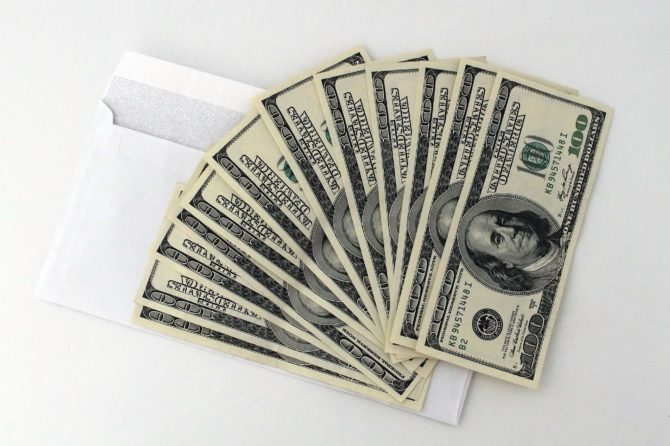
Opioid Settlements Are Here to Bust the Opioid Crisis
Opioid settlements are making a wave across the country as the manufacturers and distributors have marketed and proliferated the painkillers are being held responsible for their role in the opioid epidemic.
Recent landmark rulings in Oklahoma include:
- Johnson & Johnson being ordered to pay $572 million by an Oklahoma state judge to fund a state plan combating opioid addiction
- Purdue Pharma, the maker of OxyContin, agreeing to pay $270 million in a settlement with Oklahoma
- Teva Pharmaceuticals agreeing to an $85 million settlement with the state
These moves that could have implications for the multitude of lawsuits filed against opioid manufacturers and distributors.
What is the Opioid Epidemic?
More than two million people in the United States are currently battling opioid addiction, which has become a public health crisis. Prescriptions for opioids increased by four times between 1999 and 2014 while overdoses of the drug took 47,600 lives in 2017, accounting for 67.8% of all drug overdose deaths.
Nearly 130 people die every day from opioid-related drug overdoses, while 11.4 million individuals misuse prescription opioids on a yearly basis. The number of overdose deaths involving opioids, including prescription opioids and illegal opioids like heroin and illicitly manufactured fentanyl, is 6 times higher than it was twenty years ago. Around 68% of the 70,200 drug overdoses in a calendar year involved an opioid.
Opioids are pain-relieving drugs that include codeine, fentanyl, hydrocodone, hydromorphone, Buprenorphine/Naltrexone, morphine, and oxycodone. They are usually recommended by doctors for treating moderate to severe pain. Because of their highly addictive nature, patients may begin abusing them without even realizing it. Understanding what opioids are is vital in order to potentially diagnose opioid addiction or abuse.
The rise in opioid misuse, addiction, and overdose originally began with the proliferation of prescription painkillers in the 1990s. Their overprescription by doctors allowed the drugs to end up in not only the hands of the patients but also to family members, friends, and the black market. As states, counties, and municipalities have been faced with unprecedented devastation, they have served firms with up to 2,500 lawsuits.
What do the Settlements Mean?
One major argument against opioid makers is that these companies were fully aware that their products weren’t safe or effective, even though their advertisements said they were. Beginning in the mid-1990s, opioid manufacturers put out large-scale marketing campaigns that underplayed the addictiveness of opioid painkillers while exaggerating the benefits of the drugs.
The lawsuits stipulate that this adds up to a large-scale false advertising campaign that has led to a staggering number of deaths. Opioid distributors continued to supply large numbers of pills – some counties and states even had more prescribed bottles of painkillers than people – allowing the drugs to proliferate while people were misusing the drugs.
It has been reported that Johnson & Johnson, Purdue Pharma, and Teva, along with Endo International and Allergan, are seeking to settle the roughly 2,000 cases in a consolidated lawsuit in Ohio. The case against 22 opioid manufacturers and distributors is expected to begin in October if the parties are not able to reach a settlement.
Purdue Pharma, run by the Sackler family, could pay up to $12 billion to settle all claims against it.
What Happens Next?
Policymakers and advocates aren’t yet satisfied with what opioid companies have paid so far, despite the fines and settlements. Purdue Pharma, for example, took in over $31 billion in revenue from the mid-1990s to 2016. The company paid a $630 million fine in 2007, which added up to just 2 percent of that.
The economic burden of prescription opioid overdose, abuse, and addiction totalled $78.5 billion in 2013. Over a third of that amount is due to an increased amount of health care, addiction treatment, and criminal justice costs. Many cities and states don’t have the funds to pay for these new expenses, thus could look to big tobacco and its legal settlement in the 1990s in searching for the ideal outcome.
Big tobacco companies agreed to the Master Settlement Agreement in 1998 with 46 states, forcing them to pay tens of billions of dollars in upfront and annual payments while putting major restrictions on the sale and marketing of tobacco products.
A big settlement with drug companies could not only put restrictions on marketing for opioids but could help pay for addiction treatment, something that is still hugely underrepresented with limited access in many cities and communities across the country.
What Help is Available?
At Windward Way, our opioid addiction treatment programs are designed to provide individuals with the compassion and care necessary to assist you on the long road to recovery. Our individualized treatment plans are designed with the patient in mind.
Opioid dependence recovery can take place in any of the following settings:
- Outpatient services – Provides a treatment plan the patient can follow while living at his home, without isolating themselves from their daily lives.
- Residential facilities – Provides temporary housing where patients can get the medical care they need from a group of professionals, as well as therapy sessions in a supportive, focused environment.
- Inpatient hospital setting – Provides around the clock, overnight care for the patient, making sure she is under strict, intensive observation at all times.
If you are addicted to opioids and want help, we have the expertise and the staff to assist you in finally quitting the abuse of prescription drugs. Windward Way is the opioids addiction rehab you’ve been searching for – contact us today: 855-491-7694.
Leave a reply